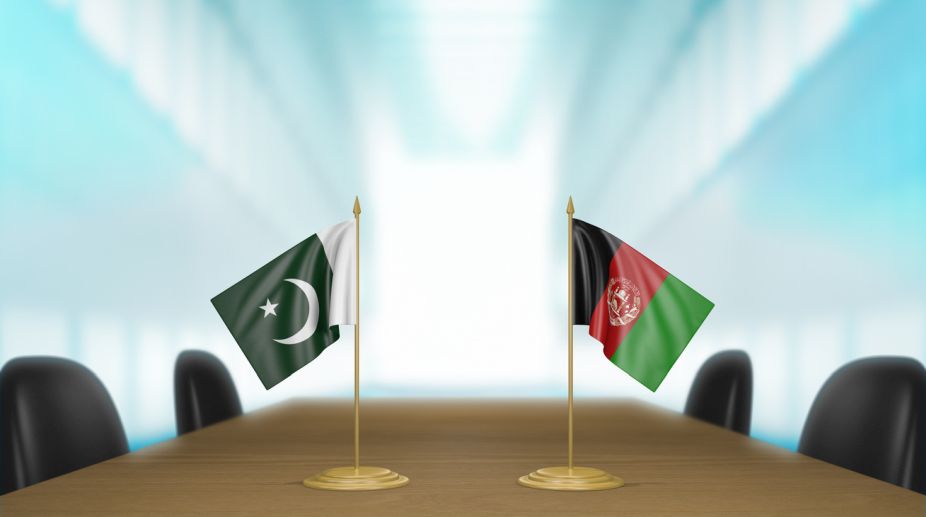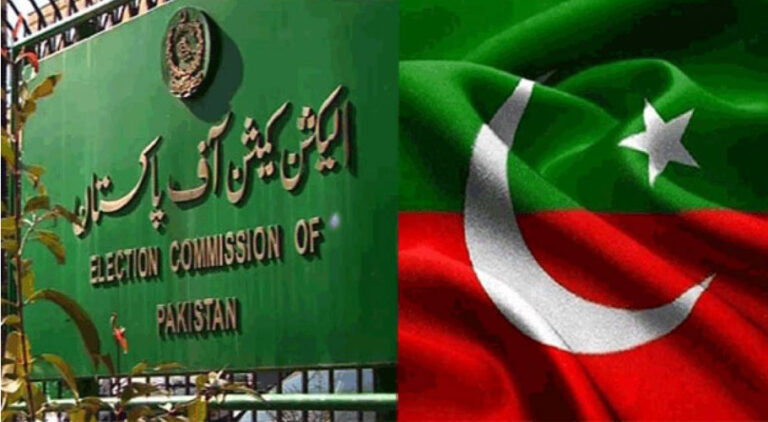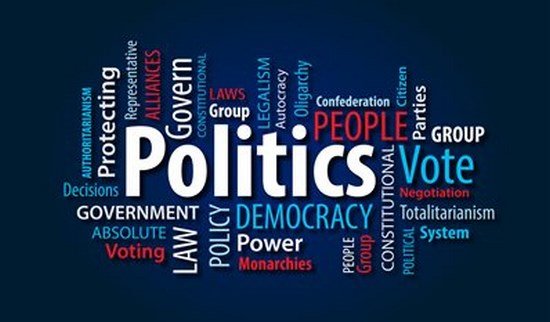Abdullah Anwar
Inflation is a critical economic phenomenon that affects the lives of individuals, businesses, and governments worldwide. In Pakistan, inflation has been a persistent challenge, with multifaceted causes and significant consequences for the economy and society. This research paper aims to comprehensively analyze the dynamics of inflation in Pakistan, examining its causes, consequences, and policy implications. Using a combination of quantitative data analysis, literature review, and policy evaluation, this paper provides valuable insights into the factors contributing to inflation in Pakistan and offers policy recommendations to address this complex issue.
This graph shows how just over a year there has been hyperinflation in Pakistan and it is still increasing.
Inflation, defined as the sustained increase in the general price level of goods and services over time, is a macroeconomic phenomenon that affects economies worldwide. It has far-reaching implications for various economic agents, including households, businesses, and governments. The dynamics of inflation are complex, driven by a multitude of factors, and its consequences can be both positive and negative, depending on the rate and stability of inflation. In Pakistan, it has been a persistent challenge with significant economic and social consequences. The country’s diverse population, reliance on agriculture, and fiscal and monetary issues make understanding inflation crucial. Pakistan has experienced fluctuating inflation rates, influenced by factors such as monetary policies, fiscal deficits, global oil prices, and geopolitical tensions. Inflation’s impact extends beyond economics, affecting income distribution, poverty, access to services, and political stability.
Inflation, as a fundamental concept in economics, represents the sustained increase in the general price level of goods and services over time.Inflation is characterized by rising prices, which means that consumers need more money to purchase the same basket of goods and services over time.As prices rise, the purchasing power of money declines. This means that the same amount of money can buy fewer goods and services. Inflation can be caused by changes in both demand and supply. Demand-pull inflation occurs when demand for goods and services exceeds their supply, leading to price increases. Cost-push inflation, on the other hand, results from rising production costs that are passed on to consumers in the form of higher prices. Economists use various indices to measure inflation, with the Consumer Price Index (CPI) and the Producer Price Index (PPI) being common tools. These indices track the prices of a representative basket of goods and services over time. Inflation can be categorized into different types based on its magnitude and persistence. Mild inflation, often considered beneficial for economic growth, is called “creeping inflation.” When inflation rates become excessively high and volatile, it can lead to “hyperinflation,” which has devastating effects on an economy. Understanding the concept of inflation is essential for policymakers and economists when formulating monetary and fiscal policies.
Theories of inflation are pivotal in explaining the underlying mechanisms and driving forces that lead to changes in price levels within an economy. Demand-Pull Theory tells inflation results from excessive demand outstripping supply. Factors like increased spending or government expenditures can lead to demand-pull inflation.Central banks use tools like interest rates to manage it. Cost-Push Theory explains how inflation arises from higher production costs, like wages or energy. These cost increases get passed on to consumers. It’s driven by supply-side factors and is challenging to control with monetary policy alone. The monetary theory also known as the quantity theory of money states that increasing the money supply, without a corresponding rise in economic output, leads to inflation. Central banks monitor and manage the money supply to control inflation. Expectations theory is what people expect about future prices that can influence current inflation. If people foresee higher prices, they may demand higher wages and prices today, fueling inflation.Phillips Curve suggests an inverse relationship between inflation and unemployment in the short term. Policymakers face trade-offs between the two. However, this trade-off is considered temporary.It is essential to note that inflation is often the result of a complex interplay of multiple factors, and different theories may apply in different economic contexts. In the case of Pakistan, understanding these theories and their applicability can provide insights into the causes of inflation, which can inform effective policy responses to manage and control inflationary pressures.
Inflation is a significant concern for emerging market economies, including Pakistan. Emerging markets are often more vulnerable to external shocks, such as fluctuations in global commodity prices and changes in investor sentiment. These external factors can exert upward pressure on inflation. Exchange rate fluctuations can influence inflation in emerging markets. Depreciation of the domestic currency can lead to higher import costs, contributing to inflationary pressures. Balancing inflation control with economic growth poses challenges for central banks in emerging markets. Inadequate infrastructure, supply chain inefficiencies, and regulatory obstacles can limit production and contribute to inflation. Effective inflation control often requires a blend of fiscal and monetary policies tailored to evolving economic conditions by policymakers in emerging markets. Emerging markets often engage in regional and international cooperation to address common challenges, including inflation. Trade agreements and coordination with global financial institutions can play a role in managing inflation. In Pakistan’s context, understanding the unique challenges and dynamics of inflation as an emerging market economy is crucial for policymakers and economists when formulating strategies to manage and control inflationary pressures.
In Pakistan, inflation has had a significant historical presence, shaped by various factors: over the years, Pakistan has experienced fluctuating inflation rates, influenced by both domestic and global factors. Government policies, including fiscal decisions and monetary strategies, have played a vital role in shaping inflation trends. Global factors, such as changes in oil prices and geopolitical tensions, have also left their mark on inflation in Pakistan. The country’s economic structure, with a substantial reliance on agriculture and various fiscal and monetary challenges, has contributed to the inflation dynamics. Inflation in Pakistan has broad socioeconomic consequences, affecting income distribution, access to basic services, and especially political stability. Hence, understanding this historical perspective is crucial for comprehending the unique drivers of inflation in Pakistan.
In Pakistan there are multiple drivers of inflation, this section dissects the primary causes of inflation in the country, categorizing them into monetary, fiscal, and supply-side factors. Monetary factors are central contributors to inflation in Pakistan:
One of the primary determinants of inflation is the expansion of the money supply within an economy. When the money supply grows significantly without a corresponding increase in the production of goods and services, it often leads to inflation. This phenomenon is typically associated with excess liquidity in the financial system, which can result from factors such as loose monetary policy or an influx of foreign remittances. The State Bank of Pakistan, as the nation’s central bank, plays a pivotal role in managing inflation. It employs a set of monetary policy tools to control the money supply and influence inflation. Key among these tools are interest rates and reserve requirements. Adjustments in interest rates, such as raising them to curb lending and borrowing, are used to influence overall demand in the economy. Reserve requirements dictate the amount of funds banks must keep in reserve, impacting their lending capacity and, in turn, the money supply. Lastly, fluctuations in exchange rates can have a notable impact on inflation in Pakistan, this depreciation can lead to higher import costs which further contribute to overall inflationary pressures.
Fiscal policies and government actions also contribute to inflation: The level of government spending, especially when not adequately matched by revenue generation, can be a significant driver of inflation. When the government injects a substantial amount of money into the economy through its expenditures, it increases the overall demand for goods and services. If this heightened demand is not met with a corresponding increase in supply, prices tend to rise. Large budget deficits, indicating a misalignment between government revenues and expenditures, can lead to increased borrowing. This borrowing can expand the money supply, potentially contributing to inflation. Effective management of budget deficits is therefore a critical aspect of controlling inflationary pressures. Supply-side factors are essential components of inflation dynamics too: Pakistan’s economy is particularly susceptible to fluctuations in food prices, which can have a significant impact on overall inflation. Supply disruptions, whether due to natural disasters, inefficient supply chains, or inadequate infrastructure, can result in periodic surges in food prices. Given the importance of food in household budgets, such fluctuations often have cascading effects on the general price level. Energy prices, specifically the cost of fuels and electricity, represent a significant supply-side factor influencing inflation in Pakistan. These prices can have a cascading effect on various sectors of the economy, ultimately contributing to overall inflationary pressures.
Exchange rate dynamics are a critical element influencing inflation in Pakistan. Fluctuations in the exchange rate, especially the depreciation of the domestic currency, can have significant consequences for the overall price level within the country. A depreciation of the domestic currency relative to other currencies can lead to higher import costs. As Pakistan relies on imports for a variety of goods, including energy and essential commodities, increased import costs can contribute to inflation. These higher costs are often passed on to consumers through elevated prices for imported goods. Exchange rate changes affect the balance of trade, potentially improving exports but also raising inflation through costlier imports. Exchange rate movements may trigger policy responses by the central bank. For example, if the currency depreciates rapidly, the central bank might intervene to stabilize the exchange rate. These interventions can have implications for monetary policy and money supply growth, which, in turn, can impact inflation.
Global factors, including changes in international commodity prices, geopolitical events, and global economic conditions, exert significant influence on inflation dynamics in Pakistan. Pakistan, like many countries, is sensitive to fluctuations in global commodity prices, particularly oil. A surge in oil prices can lead to higher costs for energy and transportation, which, in turn, contribute to inflation. Conversely, declining commodity prices can help curb inflationary pressures. The state of the global economy can influence Pakistan’s inflation. A robust global economy can stimulate demand for Pakistani exports, potentially improving the country’s trade balance and reducing inflation. Conversely, a global economic downturn can reduce demand for exports, negatively impacting Pakistan’s trade balance and possibly increasing inflation. Political tensions and conflicts in the region or globally can disrupt supply chains and lead to uncertainties in commodity markets, hence creating inflationary pressures in Pakistan. Pakistan is highly sensitive to fluctuations in global oil prices, as oil is a crucial import. When oil prices rise, it increases energy costs, affecting transportation and production. These increased costs are often passed on to consumers, contributing to inflation. Global food price changes, driven by factors like climate events and global supply and demand dynamics, can impact Pakistan’s food inflation as certain food items that are imported would sell at higher prices.
Now we will explore the far-reaching consequences of inflation in Pakistan. Inflation, when not effectively managed, can have significant economic, social, and political implications, impacting various sectors of society. First and foremost we will talk about the economic consequences: one of the most direct economic consequences of inflation is a decrease in the purchasing power of individuals and households. As prices rise, consumers can afford fewer goods and services with the same amount of money, leading to a decline in their standard of living. Then high or unpredictable inflation rates can introduce economic uncertainty. Businesses may find it challenging to plan for the future, make investments, or set prices, which can hinder economic growth and stability. Furthermore, inflation often leads to higher nominal interest rates. Borrowers face increased borrowing costs, potentially constraining investment and economic expansion. Savers, on the other hand, may see reduced real returns on their savings. Lastly, Persistent high inflation can distort investment decisions. Investors may prioritize assets that offer protection against inflation, such as real estate and commodities, rather than productive investments in the real economy.
This graph evidently shows us the hike in food prices in Pakistan as the price of milk has nearly doubled its original amount which shows us the consequences of the inflation.
Moreover, we will talk about the social consequences of inflation: at first, inflation can exacerbate income inequality. Those with fixed or low incomes, such as pensioners and low-wage workers, may struggle to keep pace with rising prices, while those with assets that appreciate during inflation, like real estate or stocks, may see their wealth increase. Hence, inflation can push more people into poverty, especially if wages do not rise commensurately with rising living costs. Vulnerable populations are often hit the hardest. Most importantly, high inflation can strain public services like education and healthcare, making it more challenging for governments to provide essential services to their citizens.
Ultimately we will see the political consequences due to inflation: the first thing that is most likely to take place is public dissatisfaction which when inflation erodes purchasing power and living standards, can lead to public dissatisfaction and protests. Governments may face increased pressure to address inflationary concerns. Furthermore, managing inflation can be politically challenging. Tough measures to control inflation, such as raising interest rates or reducing government spending, can be unpopular but may be necessary to curb rising prices. Above all, persistent inflation can contribute to macroeconomic instability, affecting the overall economic environment and investor confidence. Understanding these consequences of inflation is crucial for policymakers in Pakistan to implement effective measures that strike a balance between economic growth and price stability. Managing inflation is not only an economic imperative but also a key factor in ensuring social and political stability in the country.
Carrying forward from the last paragraph it is essential to manage inflation and it can be accomplished by effective policy-making as it can manage inflation, maintain economic stability, and enhance the well-being of the population. The most essential policies are the monetary policies for example the State Bank of Pakistan (SBP) should adopt a vigilant monetary policy stance. Utilizing interest rates as a tool to control money supply growth and inflation is imperative. When inflationary pressures emerge, the SBP should consider raising interest rates to reduce borrowing and curb demand, thus mitigating inflation. Effective management of exchange rates is pivotal. The central bank should aim for exchange rate stability to minimize the impact of currency depreciation on imported inflation. Timely intervention in the foreign exchange market may be necessary to achieve this stability.
Fiscal policies are principal as well such as,the government should prioritize addressing budget deficits by focusing on revenue generation and adopting prudent fiscal management practices. Reducing the need for borrowing to finance deficits can help contain money supply growth and, consequently, inflation. Furthermore, while subsidies can serve as a short-term measure to alleviate the impact of rising prices on consumers, they should be targeted, efficiently managed, and periodically reviewed to minimize their fiscal burden. Gradual subsidy reform can help ensure fiscal sustainability. With fiscal policies supply-side policies are important too, for instance, infrastructure investment including transportation and logistics, should be a priority. Improved infrastructure can enhance supply chain efficiency, reduce production costs, and contribute to overall price stability. Additionally, enhancing productivity and resilience in the agriculture sector is essential. Investments in irrigation, technology, and market access can mitigate the impact of food price fluctuations and reduce supply-side shocks on inflation.
This chart transparently shows us chronic deflation in China due to their monetary and fiscal policies.
Next up global economic policies should be taken into consideration for example, Pakistan should diversify its export markets and reduce reliance on specific commodities. Efforts to expand the range of exportable goods and services can reduce vulnerability to global price fluctuations. Moreover, maintaining an adequate level of foreign exchange reserves is crucial. These reserves serve as a buffer against excessive exchange rate volatility and speculative attacks on the currency. Inclusive policies and public awareness are much vital as well, investing in education and healthcare to improve human capital and reduce inflation’s impact on healthcare and education expenses. Developing robust social safety nets to protect vulnerable populations from inflation’s adverse effects, in addition to this, Prioritizing transparency in policies and communicating openly with the public to manage inflation expectations. Lastly, promoting financial literacy to empower individuals to make informed financial decisions amid inflation.
However, the most substantial policy would be international collaboration as it would be the most effective in overcoming inflationary hurdles. Collaborating with neighboring countries and international organizations can help address common inflationary challenges, particularly related to food price fluctuations. Sharing information and best practices can lead to more effective responses. Supremely, engaging in trade agreements and regional economic initiatives can promote economic stability and reduce inflationary pressures. Expanding trade opportunities and diversifying trading partners can enhance resilience to global economic fluctuations. These detailed policy implications and recommendations are designed to guide policymakers in Pakistan as they work to effectively manage inflation and create an environment of economic stability and improved living standards for the population.
In this final section, we provide a summary of the key findings and insights from our analysis of the dynamics of inflation in Pakistan, its causes, consequences, and policy implications. In this final section, we provide a summary of the key findings and insights from our analysis of the dynamics of inflation in Pakistan, its causes, consequences, and policy implications. Monetary policy, including interest rate management and exchange rate stability, plays a critical role in controlling inflation. Fiscal policies that address budget deficits and subsidy reform are equally vital.Supply-side policies, such as infrastructure investment and agricultural sector improvements, can mitigate inflationary pressures. Diversifying exports and maintaining foreign exchange reserves are important in managing external shocks. Inclusive policies, including social safety nets and investments in education and healthcare, are crucial for protecting vulnerable populations from the adverse effects of inflation. Public awareness, transparency, and financial literacy are essential for managing inflation expectations and empowering individuals to make informed financial decisions. International collaboration, both regionally and through trade agreements, can enhance economic stability and reduce inflationary pressures.
To effectively manage inflation in Pakistan and ensure economic stability and improved living standards for its citizens, policymakers must adopt a holistic and coordinated approach. This includes prudent monetary and fiscal policies that respond to inflationary pressures, additionally, Supply-side measures that enhance productivity and reduce production costs. Investments in education, healthcare, and social safety nets to protect vulnerable populations is vital too. Transparent communication with the public to manage inflation expectations and above all, active engagement in international collaboration and trade agreements to reduce external vulnerabilities. Nevertheless, continued research and adaptation of policies are essential to address the evolving dynamics of inflation in Pakistan. Monitoring global economic conditions, commodity price trends, and regional developments will be crucial for effective policy-making.
This research paper provides a comprehensive analysis of inflation in Pakistan, shedding light on its causes, consequences, and policy implications. By understanding the complex dynamics of inflation, policymakers, economists, and stakeholders can develop effective strategies to mitigate its adverse effects and promote sustainable economic growth and social development in Pakistan.
Please, subscribe to the website of republicpolicy.com

















